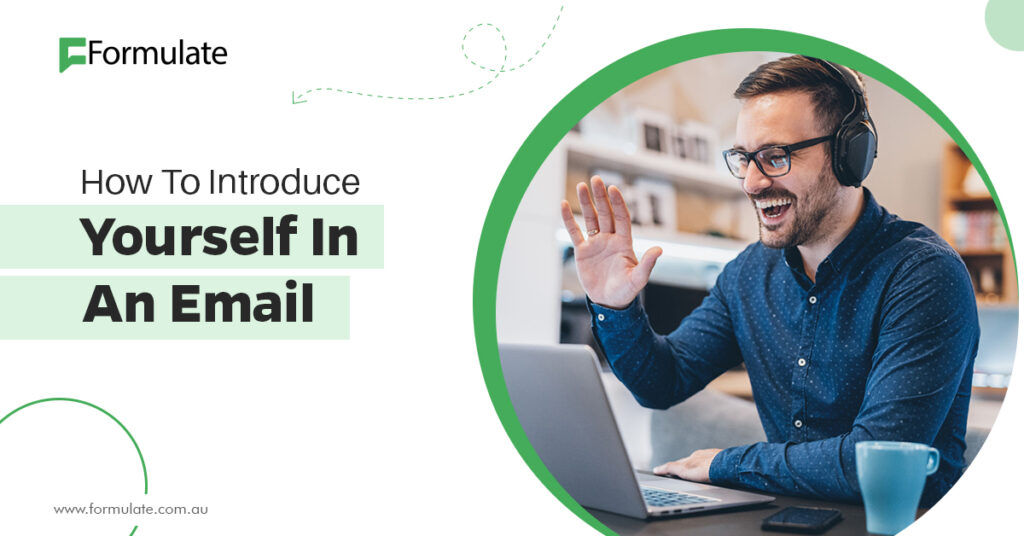With most activities carried out online, the modern workspace requires you to present yourself professionally. IM chats, video calls and physical appearance are the most considered for a professional presentation in the business world.
However, emails are also included and should not be overlooked. If you are a remote worker, your email etiquette plays a crucial role as it is your only way of getting in touch with your coworkers and clients.
Getting the introduction right is essential when you want to start a conversation, access vital information, start a partnership or check in on a project. You want to get right to the point to capture your email recipient’s attention. First impressions are crucial, and you only have one chance to make them.
Let’s look at how you can compose the perfect professional introduction email, quickly get viewed, and make your email engaging to the reader.
Key Components of Introductory Emails
The Internet provides a lot of information on how you can write an introductory email. Such information may sometimes be overwhelming and ineffective.
Here is a nine-step process you may consider following when you write a professional introductory email.
Ensure Your Subject Line is Concise
Your email’s subject line should be catchy and concise. This is the first part the recipient will see, and you only have a few seconds to grab their attention or lose it.
When writing your subject line, concentrate on concrete details stating what your email includes.
Also, avoid statements that tend to persuade people to focus on your email.
Such elements might upset the email recipient, and on some occasions, the email may not make it past the spam filter. Click-baiting subject lines are not often appreciated too.
Write to the Intended Recipient
If you introduce yourself by email, you should know to whom you write. You should direct the email to the actual person. Avoid using phrases such as “To whom it may concern” and give it a direct approach such as “Dear Dr Stephens.”
Directly addressing your email’s recipient makes an exciting read. You can achieve this by getting more information about them and personalising the material according to your knowledge. Including the recipient’s information, such as their name, boosts the chances of your email being opened by 20%. It indicates you are not sending spam emails to people you don’t know.
Ensure Your Greeting is Formal
A formal greeting is essential in professional emails as it provides a neutral approach to greet someone without assuming their receptivity. Even in casual communication such as texting, formality has its place in making an introduction.
As you proceed with communication, you may resort to using first names after a short while; but until then, keep the introductions professional by using the “Dear” salutation, which may be archaic but remains the standard form of salutation when writing emails.
Include Your Referrals
If you are sending an email for the first time to someone because a mutual acquaintance or colleague referred you, you should ensure you mention the referral. Referrals are an excellent method to get ahead and receive a rapid response, and they are also considered one of the best ways to start your email.
People often trust their friends more than strangers; thus, connecting with an associate will easily capture their attention and endear them. You should keep it simple without making it seem unreal.
Be Courteous and Straight to the Point
Always ensure your emails are straight to the point. Everyone is busy, including those checking your emails. Avoid writing unnecessary long, rambling emails when writing professional or personal emails. Only state what is required. Your emails should be clear so that even those skimming through can quickly identify the main point.
There is a thin line between terse and concise. So, pay attention to every detail and avoid compromising professionalism for brevity. Ensure your first statement is catchy, friendly, and formal to achieve this. The commonly used ones are: “I hope you are having a good week,” “I hope this email finds you well,” and “I hope you are doing well.”
Ensure Your Closing is Professional
An introductory email does not only begin with a formal greeting but also ends with a professional salutation which should be treated with the same level of sensitivity. Your salutation is crucial to your email: it indicates how professional the writing is.
However, unlike the introduction, you may use a semi-formal salutation to communicate a friendlier tone as you close the mail.
Proofread Your Email
Review your email at least two times before sending it. You only have one chance to make a first good impression; typos and errors will prevent you from achieving that.
Include Your Attachments
Whether a first-time or subsequent email, always include all the required attachments. Attachments usually contain additional information which you may not be able to include in your written email. Thus, failing to include them creates an impression of disorganisation.
Lately, most email providers have been improved to issue warnings if you fail to include an attachment. However, they may not be 100% accurate; hence, manually going through your email is best to ensure you have added all the necessary information.
Here’s a simple hack you can try the next time you write an introductory email: upload all required attachments before writing your first word.
Schedule the Email
Find out when the email’s intended recipient is likely to read it and schedule it within that time.
Everyone has a different time of checking their emails.
For instance, some prefer to check them in the evening, while others may want to go through them first thing in the morning. Therefore, you should confirm when your email recipient is likely to check their emails. This way, your email will be seen on time.
What’s the Best Opening for an Introductory Email?
How best an introductory email’s opening depends on various factors such as whether you are contacting clients, introducing two individuals or if it is a follow-up message. Always ensure your first paragraph is professional to maintain the right tonality for any writing situation.
Can I Bullet Point a Professional Introductory Email?
Yes, you can. However, you should proceed with caution since people are busy, and they will likely skim an email for the information deemed necessary. Also, avoid being overly frank, as this may leave an unpleasant impression, especially to those who do not know you, as it is in most cases with a professional introductory email.
What to Do if You Forget Attachments for Your Professional Introductory Email
Do not panic once you realise you failed to attach the required attachments. You can solve the issue by simply sending an additional email with the attachment and a sincere apology. This is a common occurrence, and even those writing professional introductory emails for a long time may experience it. However, if you want to avoid repeating this mistake in the future, consider uploading all attachments before writing the message.

